The Elf Car Pack
 2017 Alpine #36 Signatech Alpine A470
2017 Alpine #36 Signatech Alpine A470
Alpine's claim to fame was its success in rallying in the late 1960s, when the A110 was the car to have (or to beat) in the Rallye Monte Carlo. But before that, the French manufacturer left a mark in the world of endurance racing with a series of sleek prototypes. In 1978 they even managed to beat Porsche to achieve their only victory in the Le Mans 24h with the turbocharged A442, which eventually spurned parent company Renault to use the same technology on a GP racer. So, it's only natural that part of the strategy to relaunch the brand entailed entering the World Endurance Championship and the Le Mans 24h. The A470 is the third car to wear the blue-and-orange colors of the marque, and as part of the LMP2 class rules, it's pushed by a 4.2 litre V8 engine made by specialist manufacturer Gibson, producing something north of 600hp.
Hint: careful - there's a high risk of avalanches...
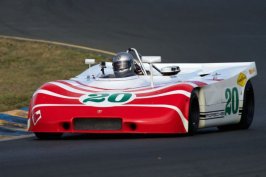
1970 Porsche #20 Porsche KG 908/3
Over the years, Porsche produced many great race cars - but few are as iconic, or as long-lived, as the 908, which debuted in 1966 and was kept in continuous use until the 1980s, eventually morphing in the 936. Powered in its original incarnations by a 3-litre engine with 8 opposing cylinders, the light-weight 908/3 was a nimble racecar which, together with the faster 917, helped Porsche dominate the International Championship for Makes in 1969, 1970 and 1971. This car was fielded by the works team in the 1970 Targa Florio, helmed by Vic Elford, but it retired from the race. Will you be luckier behind the wheel of this legendary racer?
Hint: 8 cylinders of world domination.
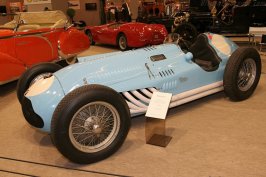 1948 Talbot T26C Talbot-Lago
1948 Talbot T26C Talbot-Lago
Today's F1 cars are more similar to a fighter jet than they are to any car you'll see on the roads, and employ a plethora of very advanced technologies that will likely never find their place on one. But the early decades of GP racing were dominated by cars like the Talbot T26, which was offered to customers with a choice of this single-seater or an equally utilitarian "grand sport" body (one such car won the 1950 Le Mans 24h), or opulent bodywork courtesy of world-renown coachbuilders like Saoutchik and Figoni et Falaschi. While its inline-6 naturally aspirated engine was underpowered compared to that of the various Alfa Romeos and Ferraris of its time, it's not hard to see why the T26C is seen by many as one of the most beautiful cars to enter a F1 race.
Hint: a F1 car for the streets... Or maybe it's the other way around?
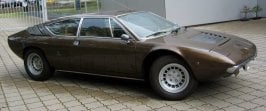 1974 Lamborghini Urraco P 300
1974 Lamborghini Urraco P 300
After the success of the extravagant mid-engined Miura, the engineers at Lamborghini set to work on a more affordable and easier to live with car to broaden the brand's appeal. To that purpose they designed a relatively mild-mannered V8 engine, which was then dropped behind the rear seats of a peculiar 2+2 grand tourer designed by Bertone. The result was appropriately named Urraco, or "little bull". This is the latter P 300 version, introduced after complains about the lack of gumption in the original model: the engine was enlarged, from 2.5 to 3 litres, and received double overhead cams; power output rose from the original 220 to 265hp - enough to require a very firm hold on the 4-spoke, deep-dish steering wheel.
Hint: sometimes not even an oil shock is enough to stop your thirst for power!
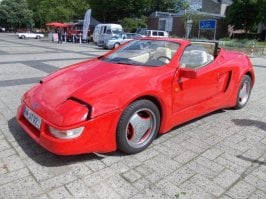
1988 Treser TR1
The car you're looking at is the brainchild of Walter Treser, the engineer behind Audi's Quattro system and early rally victories. In 1981, Treser left the company and begun selling Audis which featured enhanced performance and unique body modifications. In 1988 he stepped up his game and debuted the TR1, his first independently-designed car, featuring an aluminum skeleton and polyurethane body and motivated by the same engine as the VW Golf GTI. The car was launched in Germany with a one-make cup, and there were ambitious plans to sell it in the US - but alas, the company went bankrupt after building a mere 50 exemplars of the TR1, which means that this will likely be the closest you'll ever get to driving one.
Hint: can you believe it's not an Audi?
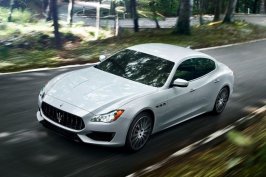 2016 Maserati Quattroporte GTS
2016 Maserati Quattroporte GTS
Maserati may have gotten their start with sportscars and GP racers, but the most long-lived model in their range is the luxurious Quattroporte ("four doors" in Italian). Its fourth generation offers more interior space and creature comforts than any previous iteration, to better compete with the Porsche Panamera and Aston Martin Rapide, but don't let that fool you into thinking that it has sacrificed any bit of the performance and fiery temper of its predecessors: the GTS in particular matches the excellent chassis (shared with the smaller Ghibili) with the same 3.8-litre V8 twin-turbo engine found in the Ferrari California T. Push the pedal on the medal, and this Quattroporte will nail you to the seats - but then, it's not such a bad place to be...
Hint: opulent and fast.
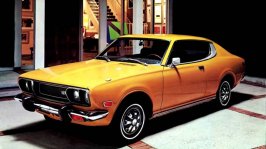 1973 Datsun 610 HT
1973 Datsun 610 HT
The Datsun 510 was Nissan's first global hit, so when Nissan introduced its replacement in 1973 there were high expectations. The link to the styling of the larger Skyline was even more evident that it'd been in the previous model, especially in the two-doors hardtop model, which owes a lot to the
Kenmeri coupè. The American market was the only one which received a two-litre inline-4 engine: with the proper modifications, it should make for a snappy ride - especially if you plan to widen it and fit larger, stickier tires.
Hint: a car with sharp styling and remarkable economy.




















































































































































































































































































